Will Incense Get You High?
Incense sticks contain all sorts of herbal ingredients, many of which possess phytochemicals—including terpenes—that produce subtle shifts in human consciousness. However, other plants produce much more pronounced effects. This has led many people to ask: "can incense sticks get you high?".
The act of lighting incense involves burning various plant materials to release their pleasant aromas into the air. While watching a pillar of smoke rise from the tip of a stick or cone of incense, some of it will enter your airways, and eventually your bloodstream. Plants contain an array of mood and consciousness-altering compounds, which raises the question: can burning incense get you high?
What Is Incense?
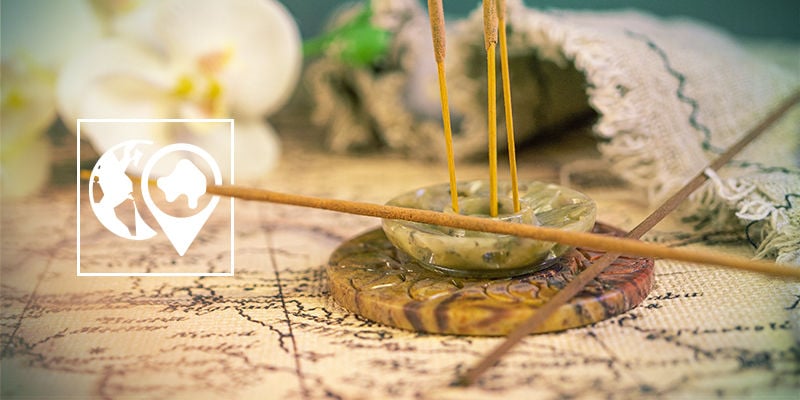
The word “incense” stems from the Latin word “incendere”, meaning “to burn''. Cultures have utilised this practice for thousands of years. The ancient Egyptians employed incense during mystical rituals and meditation, whereas Babylonian culture burned aromatic plants while offering prayer. The practice also has ties to religious use in ancient China, the Buddhism of Korea, and the samurai warrior culture of Japan.
Tapping into the aromatic phytochemicals within plants seems to stir something within the human spirit. Why does burning incense enable us to feel connected to the divine, be that within a religious temple or before stepping onto the battlefield?
Hundreds of plant species are used in incense. We know molecules such as cannabinoids and terpenes cause shifts in human consciousness, both subtle and profound. Continue reading to discover more about the practice of burning incense, and how it can affect the human mind.
How Incense Sticks Work
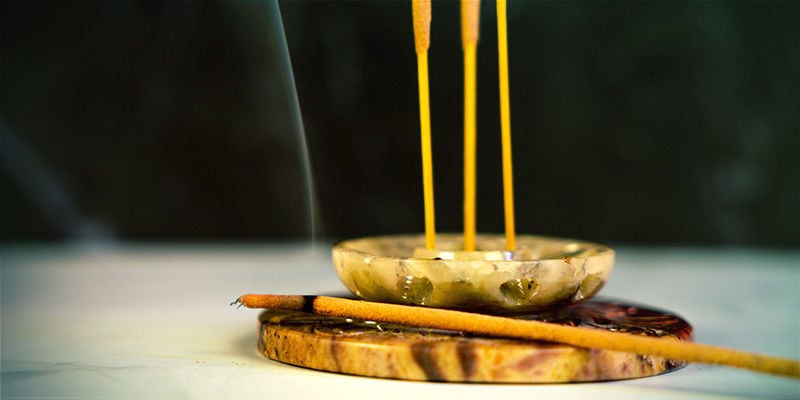
Incense sticks work by setting alight the tip of a specially prepared bundle of plant matter and filler material. After applying a flame to the end of the stick, users gently blow it out. This sends a small and continuous plume of smoke into the air.
Because incense sticks partly consist of slow-burning fillers, they continue to give off aromatic smoke for 60–90 minutes. This leisurely pace means users can enjoy aromas during long periods of meditation, while digging deep into a book, during yoga practice, or while departing into psychedelic realms with a sitter nearby.
Aside from smelling great, incense sticks fill the room with an array of phytochemicals. The type of molecules released depends on the type of plants used within the preparation. Almost all plants contain terpenes—aromatic molecules that underpin their unique scents. Over 40,000 of these volatile hydrocarbons appear throughout the plant kingdom, and many of them produce subtle shifts in mood, enhance focus, and even exert soothing, sleepy effects.
What Are Incense Sticks Made Of?
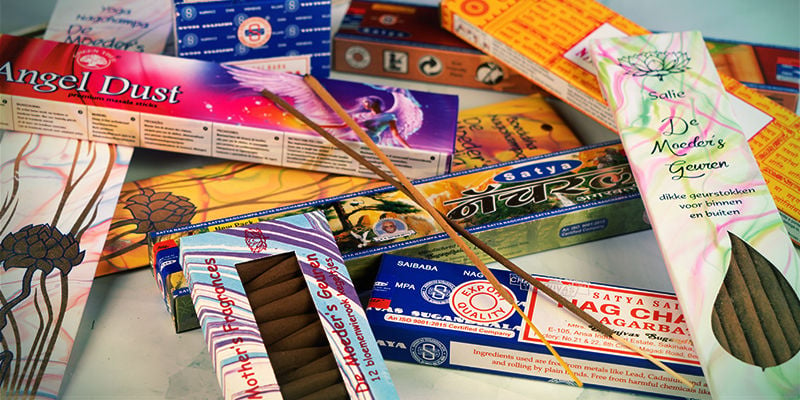
Incense sticks are composed of aromatic plant material that gives off a particular scent, alongside a combustible filler material that binds all of the ingredients together and holds them in shape. Common herbs and plant-derived materials used in incense include:
- Frankincense
- Myrrh
- Patchouli
- Champak
- Sandalwood
- White sage
- Cinnamon
- Rose
- Palo santo
After processing, the powder from these plants is combined with natural binding agents such as charcoal or wood ash to enable them to burn slowly and keep their structure.
Are Incense Sticks Harmful?
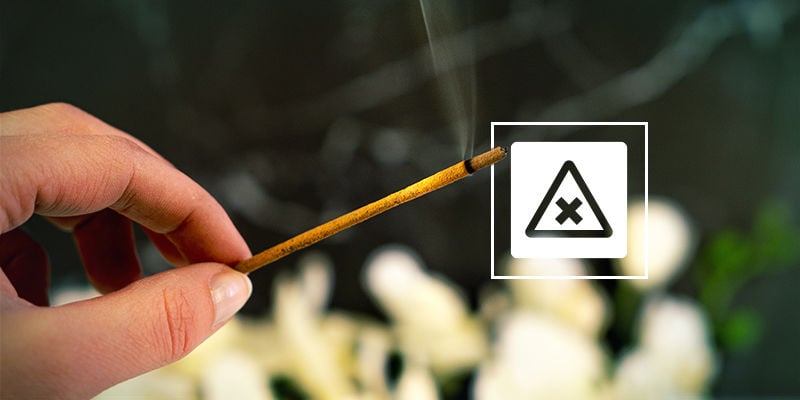
Because burning incense involves combustion, the process does create carcinogenic compounds and other potentially harmful substances, such as carbon monoxide. After researching the effects of incense on human health, scientists have produced evidence that draws a link between the practice and some health conditions.
For example, research from Singapore identified an increased risk of lung cancer following long-term exposure to incense burning, while a study conducted in China discovered an increased risk of high blood pressure.
With these risks in mind, burning incense sticks in moderation may also produce some positive effects on the human body and mind. Anything that helps to enhance meditation, pull the mind into the present moment, and elevate the mood may help to release tension, a factor that underpins many modern maladies.
Will Incense Get You High?
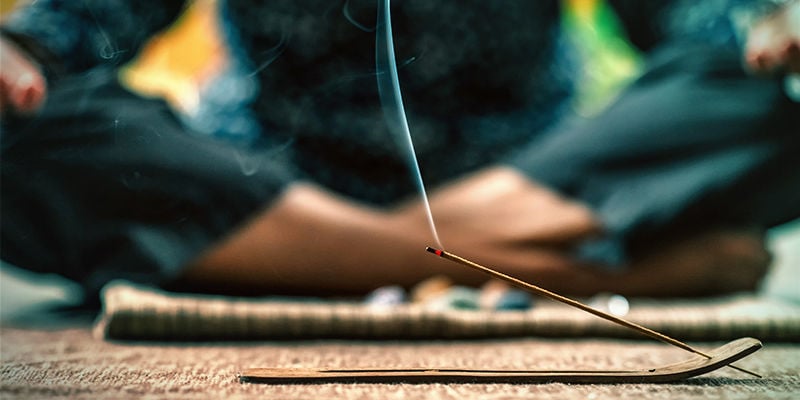
It depends. Because myriad plant substances are used in the creation of incense sticks, their effects vary dramatically. That said, many herbs used in these aromatic preparations do not produce psychotropic or intoxicating effects; they merely smell pleasant.
Others produce only subtle effects. Plants such as rosemary and hops contain high levels of the terpene myrcene, a molecule that produces relaxing effects when inhaled. In contrast, citrus-based incense releases high levels of limonene into the air—a terpene associated with focus and concentration.
However, these effects are minor, and far from truly psychotropic. Although rare, preparing an incense stick using dried cannabis would theoretically fill the air with THC and other cannabinoids, yet a low concentration is unlikely to cause a substantial effect.
What About Frankincense?
Frankincense derives from the Boswellia tree native to dry and mountainous regions of India, Africa, and the Middle East. Prized in these regions since antiquity, this aromatic resin unleashes a sweet and woody scent when burned.
Interestingly, the tree sap also produces a set of molecules labelled by science as psychoactive. Researchers at John Hopkins University unveiled that this substance has worked its way into spiritual and religious ceremonies all over the world—the molecule incensole acetate targets receptors in the brain associated with warmth and emotions.
Tips for Burning Incense Safely
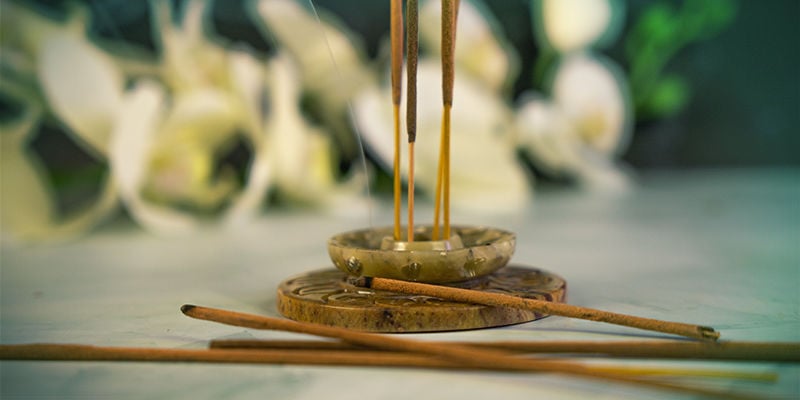
Burning incense helps to sweep the mind away from the worries of the world. Use these tips to enjoy this practice safely.
Use an Incense Stick Holder |
Always place your ignited incense sticks into a designated holder. These devices feature a flame-proof platform that captures the embers, helping to minimise the fire hazard.
Never Directly Inhale Incense Stick Smoke |
Never directly inhale the smoke that rises from the end of an incense stick. Although these fumes contain plant compounds, they also contain products not fit for human consumption. Traces of contaminants may be present within these substances. They aren’t designed for direct inhalation, more so for ambient aromas.
Never Leave Burning Incense Sticks Unattended |
Incense sticks pose a fire hazard. Pets, children, and gusts of wind can tip them over and put them in contact with flammable materials. Always monitor your incense sticks to prevent accidents.
Use in a Large and Airy Room |
Place your lit incense sticks within large and airy rooms. The smoke will quickly fill up smaller spaces and possibly irritate the eyes and lungs.
Use Incense Sticks in Moderation |
Although they bring positive effects, long-term use of incense may be detrimental. Use incense sticks as part of an infrequent ritual as and when you need them. Not only will daily use increase the risk of adverse effects, but it’ll also dilute the novelty and potency of the experience.
- (n.d.). Acta Horticulturae - https://www.actahort.org
- (2015/12/01). Effect of olfactory stimulation of isomeric aroma compounds, (+)-limonene and terpinolene on human electroencephalographic activity - ScienceDirect - https://www.sciencedirect.com
- (n.d.). Burning incense is psychoactive: New class of antidepressants might be right under our noses - https://www.sciencedaily.com
- Jeppe T. Friborg, Jian-Min Yuan, Renwei Wang, Woon-Puay Koh, Hin-Peng Lee, & Mimi C. Yu. (2008/10/10). Incense use and respiratory tract carcinomas: a prospective cohort study - https://www.ncbi.nlm.nih.gov
- Mohd. Razali Salleh. (2008, October). Life Event, Stress and Illness - https://www.ncbi.nlm.nih.gov
- Xiuling Song, Wenjun Ma, Xiaojun Xu, Tao Liu, Jianpeng Xiao, Weilin Zeng, Xing Li, Zhengmin Qian, Yanjun Xu, & Hualiang Lin. (2017, July). The Association of Domestic Incense Burning with Hypertension and Blood Pressure in Guangdong, China - https://www.ncbi.nlm.nih.gov
-
 3 min
8 September 2020
How To Make Herbal Incense To Create A Relaxing Atmosphere...
Making incense sticks is an easy process. Simply by following our directions, you can make amazing creations that set the mood with incredible scents.
3 min
8 September 2020
How To Make Herbal Incense To Create A Relaxing Atmosphere...
Making incense sticks is an easy process. Simply by following our directions, you can make amazing creations that set the mood with incredible scents.
-
 4 min
26 June 2019
7 Reasons To Use Incense
Using incense needn’t be exclusive to religious worship or moments of self-reflection. They can be used at home, in the office, or to cover up unwanted smells. There has never been a better time to...
4 min
26 June 2019
7 Reasons To Use Incense
Using incense needn’t be exclusive to religious worship or moments of self-reflection. They can be used at home, in the office, or to cover up unwanted smells. There has never been a better time to...
-
 1 min
6 November 2017
Best Incense For Relaxation And Sleep
Here at Zamnesia, we bring you all sorts of herbs. Herbal incense is a safe and cost-effective way to unwind. Discover our best varieties of incense for easing the mind, body and soul.
1 min
6 November 2017
Best Incense For Relaxation And Sleep
Here at Zamnesia, we bring you all sorts of herbs. Herbal incense is a safe and cost-effective way to unwind. Discover our best varieties of incense for easing the mind, body and soul.
-
 1 min
8 January 2016
The Origins of Nag Champa Incense
Nag Champa is a unique blend of herbs used to create that iconic incense smell. Its use is so widespread that its smell became intimately linked to incense - though it is used in many other products.
1 min
8 January 2016
The Origins of Nag Champa Incense
Nag Champa is a unique blend of herbs used to create that iconic incense smell. Its use is so widespread that its smell became intimately linked to incense - though it is used in many other products.













 United States
United States











